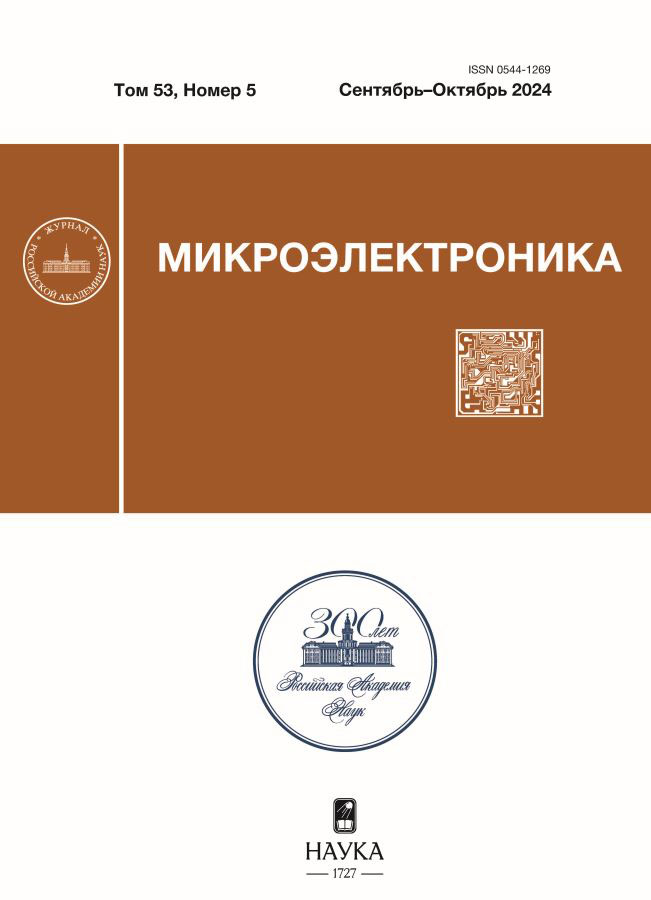Математическое моделирование системы жидкостного охлаждения микропроцессора
- Авторы: Андреев А.И.1, Семенов А.Е.1
-
Учреждения:
- Астраханский государственный технический университет
- Выпуск: Том 53, № 5 (2024)
- Страницы: 397-406
- Раздел: МОДЕЛИРОВАНИЕ
- URL: https://kld-journal.fedlab.ru/0544-1269/article/view/681355
- DOI: https://doi.org/10.31857/S0544126924050056
- ID: 681355
Цитировать
Полный текст
Аннотация
В данной работе исследуются вопросы эффективности работы системы микропроцессор-система охлаждения и поддержания оптимальной температуры электронных компонентов. Для этого проведены эксперименты на существующей системе охлаждения микропроцессора с контролем всех основных параметров, в первую очередь таких как температура и расход теплоносителя, производительность и температура процессора. На основании полученных данных построена математическая модель, описывающая изменение мощности микропроцессора и позволяющая рассчитывать температуры и скорости теплоносителей, а также получать наиболее эффективные режимы для работы системы охлаждения. Полученные экспериментальные данные и математическая модель позволяет прогнозировать потребные мощности системы охлаждения и параметры работы микроэлектронных компонентов, что особенно важно при появлении новых поколений микропроцессоров, обладающих наиболее высокой производительностью. Полученные данные также позволяют рассчитывать параметры для существующих процессоров с целью наибольшего увеличения эффективности и надёжности их работы, что актуально и для других электронных устройств, в частности микроконтроллеров.
Полный текст
Об авторах
А. И. Андреев
Астраханский государственный технический университет
Email: aresut79@mail.ru
Россия, Астрахань
А. Е. Семенов
Астраханский государственный технический университет
Автор, ответственный за переписку.
Email: aresut79@mail.ru
Россия, Астрахань
Список литературы
- Федорович Д.С. Деградация центральных процессоров в персональных компьютерах / Д. С. Федорович; науч. рук. С. В. Сизиков // Актуальные проблемы энергетики 2020 [Электронный ресурс]: материалы студенческой научно-технической конференции / сост. И. Н. Прокопеня. – Минск: БНТУ, 2020. – С. 278–284.
- Srinivasan J. et al. The case for lifetime reliability-aware microprocessors // ACM SIGARCH Computer Architecture News. – 2004. – Т. 32. – № 2. – С. 276.
- Moore G. BCramming more components onto integrated circuits,[Electronics, vol. 38, pp. 114–117, Apr. 19, 1965.
- Mahajan R., Chiu C., Chrysler G. Cooling a microprocessor chip // Proceedings of the IEEE. – 2006. – Т. 94. – № 8. – С. 1476–1486.
- Пехуров Н.В., Нацаренус П.А. Сравнение методов традиционного охлаждения с иммерсионным методом охлаждения систем // Вестник магистратуры. – 2019. – № 6–2. – С. 93.
- Шелехов И.Ю., Коваленко А.Е., Залуцкий А.А. Оптимизация процесса использования вторичной тепловой энергии // The Scientific Heritage. – 2022. – № 82–1. – С. 68–70.
- Немтырёва К.А. Системы охлаждения в ПК / Конкурс лучших студенческих работ – 2021. – С. 9–12.
- Harun M.A., Sidik N.A.C. A review on development of liquid cooling system for central processing unit (CPU) // Journal of Advanced Research in Fluid Mechanics and Thermal Sciences. – 2020. – Т. 78. – № 2. – С. 98–113.
- Gullbrand J. et al. Liquid cooling of compute system // Journal of Electronic Packaging. – 2019. – Т. 141. – № 1. – С. 010802.
- Halim N.F.C. and Sidik N.A.C. “Nanorefrigerants: A Review on Thermophysical Properties and Their Heat Transfer Performance.” Journal of Advanced Research in Applied Sciences and Engineering Technology 20, No. 1 (2020): 42–50. 11.
- Halim N.F.C. and Sidik N.A.C. “Mixing Chamber for Preparation of Nanorefrigerant.” Journal of Advanced Research in Applied Sciences and Engineering Technology 21, No 1 (2020): 32–40.
- Effect of Temperature on Power-Consumption with the i7–2600K /. 2011 https://forums.anandtech.com
- Рыбаков А.В. Разработка системы охлаждения процессора персонального компьютера с использованием элемента Пельтье // Договора № 17–1–004502 от 19.10. 2017 г. между Фондом Президентских грантов и РМПО. Проект «Организация региональной сети и проведение бизнес-школ-выставок, направленных на развитие у школьников и студентов навыков научного предпринимательства, способствующих внедрению экономически перспективных разработок молодых инноваторов». – С. 12.
- Лебакин А.И., Червенчук В.Д., Забудский А.И. К вопросу о практическом применении элементов Пельтье // Роль научно-исследовательской работы обучающихся в развитии АПК. – 2019. – С. 165–173.
- Al-Rashed M.H. et al. Investigation on the CPU nanofluid cooling // Microelectronics Reliability. – 2016. – Т. 63. – С. 159–165.
- Bahiraei M., Heshmatian S. Electronics cooling with nanofluids: A critical review // Energy Conversion and Management. – 2018. – Т. 172. – С. 438–456.
- Qi C. et al. Experimental study on thermo-hydraulic performances of CPU cooled by nanofluids // Energy Conversion and Management. – 2017. – Т. 153. – С. 557–565.
- Deng Y., Liu J. Optimization and evaluation of a high-performance liquid metal CPU cooling product // IEEE Transactions on Components, Packaging and Manufacturing Technology. – 2013. – Т. 3. – № 7. – С. 1171–1177.
- Sarafraz M.M. et al. On the convective thermal performance of a CPU cooler working with liquid gallium and CuO/water nanofluid: A comparative study // Applied Thermal Engineering. – 2017. – Т. 112. – С. 1373–1381.
- Habibishandiz M., Saghir M.Z. A critical review of heat transfer enhancement methods in the presence of porous media, nanofluids, and microorganisms // Thermal Science and Engineering Progress. 2022. Т. 30. С. 101267.
- Fan F. et al. A novel thermal efficiency analysis on the thermo-hydraulic performance of nanofluids in an improved heat exchange system under adjustable magnetic field // Applied Thermal Engineering. 2020. Т. 179. С. 115688.
- Букин В.Г. Гидравлическое сопротивление при кипении хладагентов в трубах горизонтальных и вертикальных испарителей судовых холодильных машин / В.Г. Букин, А.И. Андреев, А.В. Букин // Вестник Астраханского государственного технического университета. Серия: Морская техника и технология. 2020. № 2. С. 92–99. doi: 10.24143/2073-1574-2020-2-92-99.
Дополнительные файлы



















